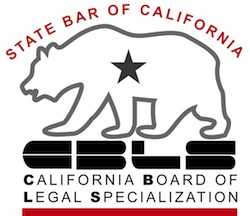Before you file bankruptcy, you need to know what happens to your business in your bankruptcy. And like so many things, there’s no single, simple answer. Two factors drive the fate of the business. One is whether the business is itself a legal entity, like a corporation or LLC. The second is what chapter you […]
Your Business Partnership Needs A Prenup
Financial partnerships are at least as challenging as marriages. And business deals don’t have love to smooth the rough spots in the relationship. The traditional marriage service ends with the charge that what God has joined together, let no man put asunder. That’s great with love, but not so great with money. Something will likely asunder […]
Personal Assets Can Be At Risk For Your Business Debts
Business debt can bleed over into an entrepreneur’s personal assets. Hearing me say that, my client was dumbfounded. He was aghast that the generous equity in the home he and his wife owned was at risk when his corporate business folded. That was not because the shareholder is liable for the corporation’s debts. A properly […]
When Bankrupting The Business Doesn’t Protect The Owner
“I want to file bankruptcy for my business, but I don’t need a personal bankruptcy”. I’ve had 2 such calls to my law office in just the last week. And in each case, bankrupting the business corporation will not solve the debt situation. Here’s why. The underlying problem is that the individual owner is personally […]
Can You Rescue Your Business With Chapter 13
Small business owners who are sole proprietors can enlist the power of bankruptcy’s Chapter 13 to rescue their business at a price they can afford. Everyone thinks of Chapter 11 as the “keep the business and ditch the debt” form of bankruptcy. But traditional Chapter 11 is cumbersome and just flat out too expensive for […]
Step By Step Guide To Business Shutdown
There’s lots written on how to start a business. Not so much about business shutdown. Even pre-pandemic, half of all new businesses fail within 5 years. Post pandemic, the pain is so much greater. So let’s walk through how to manage a business shutdown, tie up loose ends, and minimize problems that may follow you […]
SBA Loans Collectible Long Past Business Failure
The SBA has eagle eyes and sharp talons when it comes to collecting from guarantors of business loans. SBA collection rights are ruthless, efficient, and ageless. So I learned when a client consulted me about a business that had failed 12 years ago. Yet the SBA had never sued him, nor had it filed a […]
When You Can’t Pay The EIDL Loan
The COVID-era EIDL loans are coming due. But just because the pandemic is over doesn’t mean that business has returned to normal. Prepandemic, normal may have been difficult too. If yours is one of the many businesses can’t bear the additional stress of repaying EIDL loans, here’s what you need to know. What are EIDL […]
Considering Going Out Of Business?
When the virus shutdown is over, ailing businesses must consider whether to continue.
- 1
- 2
- 3
- 4
- Next Page »








